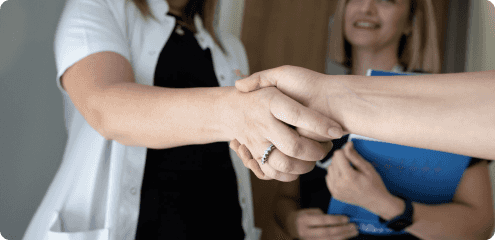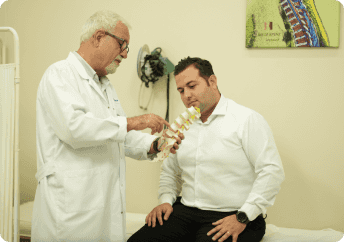What Vatan Healthcare Can Offer You
Price Range
| Augmentation Mammaplasty Using Implants | €3,900 |
| Reduction Mammoplasty | €3,300 |
| Breast Lift | €3,300 |
| Breast Lift with Implants | €4,700 |
| Gynecomastia | €3,300 |
Please note that the price range of the surgery provided are estimates. A bespoke package will be developed after a thorough evaluation of your individual case. Schedule your free first consultation with us today here.
Package Details
Consultation with your Surgeon
Interpretation service throughout your hospital stay
Related health tests
Surgery
Anaesthesia
24/7 access to Nurses' station during your stay
Hospital accommodation for you and your companion with access to Wi-Fi and Netflix
Transportation service from Istanbul to the hospital for your treatment and back to the airport at the end of your procedure for you and your companion
Our Mammoplasty Physicians

Dr. Lütfi Murat Deniz

Dr. Muhammed Nebil Selimoğlu
Post Treatment Care & Recovery

View Our Post Treatment Care & Recovery
Mammoplasty Surgery
Each type of mammoplasty addresses specific concerns related to the breast's appearance, function, or health. Some of the treatments we provide include:
- Breast Augmentation: Increasing breast size using implants or fat transfer.
- Breast Reduction: Removing excess fat, glandular tissue, and skin to reduce breast size.
- Breast Lift, Mastopexy Surgery: Raising and reshaping sagging breasts.
- Male Breast Reduction, Gynecomastia Surgery: Male breast reduction to treat enlarged male breasts.
- Breast Reconstruction: Rebuilding the breast shape following mastectomy or lumpectomy.
Click on the individual tabs below for a detailed guide on the highlighted treatments.
Breast Augmentation
For some women, having smaller breasts can affect their confidence and self-perception for various social, cultural, and personal reasons.
Breast augmentation is a surgical procedure designed to enhance the size and shape of the breasts, typically through the insertion of implants. The operation involves several key medical steps to ensure both effectiveness and safety.
Breast Augmentation Procedures: A Step-by-Step Guide
- 1. Preoperative Assessment
Initially, a thorough preoperative evaluation is conducted by one of our experienced surgeons, including a detailed discussion of the patient’s medical history, a physical examination, and imaging tests like mammography or ultrasound to assess breast tissue. - 2. Anaesthesia
The surgical procedure itself is performed under general anaesthesia, ensuring the patient is unconscious and pain-free throughout the procedure. In some cases, a combination of local anaesthesia with sedation may be used depending on the patient's health and the extent of the surgery.
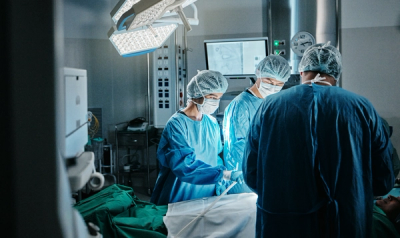

- 3. Incision Techniques
A surgeon makes an incision in one of three common locations: the inframammary fold (under the breast), periareolar (around the nipple), or transaxillary (in the armpit). The choice of incision site depends on the type of implant, patient anatomy, and desired outcome. Once the incision is made, the surgeon creates a pocket either beneath the pectoral muscle (submuscular placement) or directly behind the breast tissue (subglandular placement). The choice of placement impacts factors such as recovery time, appearance, and potential complications. - 4. Placement of Implants
The implants, which are usually silicone gel-filled, are then carefully inserted into the pocket. Silicone gel implants are widely preferred due to their natural feel and consistency. The implants may have a smooth or textured surface, with textured implants believed to reduce the risk of capsular contracture, a complication where scar tissue forms tightly around the implant. - 5. Closing the Incisions
After placing the implants and ensuring symmetry and proper positioning, the incisions are closed with sutures, and the area is bandaged to minimise swelling and support healing. - 6. Re-draping the Skin and Final Adjustments
Postoperative care is crucial and involves pain management, activity restrictions, and regular follow-up consultations to monitor the recovery process and detect any early signs of complications, such as infection, implant displacement, or capsular contracture.
Overall, breast augmentation is considered a safe and effective procedure when performed by a qualified and experienced plastic surgeon, but like any surgery, it carries risks that should be carefully weighed against the benefits.
Breast reduction, or reduction mammoplasty, is a surgical procedure aimed at reducing the size and weight of the breasts to alleviate physical discomfort, improve body proportions, and enhance overall quality of life. This procedure is often sought by women experiencing physical issues such as back, neck, and shoulder pain, skin irritation, or posture problems due to overly large breasts. It can also help improve mobility and increase comfort in daily activities.
Breast Reduction Procedures: A Step-by-Step Guide
- 1. Preoperative Assessment
The process begins with a comprehensive preoperative assessment, where our surgeon evaluates the patient’s overall health, medical history, and specific concerns. Imaging studies, such as mammograms or ultrasounds, may be conducted to assess breast tissue and detect any underlying conditions. Our surgeon will also discuss the desired breast size, shape, and any potential risks, ensuring the patient has realistic expectations about the outcomes. - 2. Anaesthesia
Breast reduction surgery is typically performed under general anaesthesia, ensuring the patient is unconscious and pain-free throughout the procedure. In some cases, a combination of local anaesthesia with sedation may be used depending on the patient's health and the extent of the surgery.

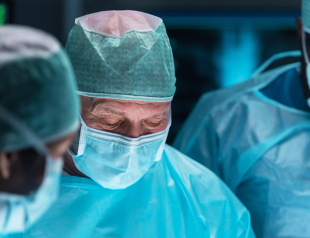
- 3. Incision Techniques
There are several incision techniques used in breast reduction surgery, and the choice depends on the size and shape of the breasts, the amount of tissue to be removed, and the patient's preferences. The most common techniques include:- Anchor or Inverted-T Incision: This involves three incisions—one around the areola, a vertical incision from the areola to the breast crease, and a horizontal incision along the breast crease. This technique is commonly used for patients requiring significant reduction.
- Vertical or Lollipop Incision: This involves an incision around the areola and a vertical incision down to the breast crease. It is suitable for moderate reductions and allows for good reshaping of the breast.
- Liposuction-Only Reduction: In some cases, where only a minor reduction is needed and skin elasticity is good, liposuction alone may be used to remove excess fat from the breasts.
- 4. Removal and Reshaping of Tissue
Once the incisions are made, the surgeon removes excess breast tissue, fat, and skin to achieve the desired breast size and shape. The nipple-areolar complex is typically repositioned to a more natural height, and, if necessary, resized for a proportionate appearance. Unlike a breast lift (mastopexy), which primarily focuses on reshaping and lifting the breasts, breast reduction involves a substantial removal of breast volume. - 5. Closing the Incisions
After reshaping the breasts and repositioning the nipples, the surgeon closes the incisions with sutures, which may be layered deep within the breast tissue to provide support and minimise scarring. The surface incisions are closed with sutures, skin adhesives, or surgical tape. Drainage tubes may be temporarily placed to prevent fluid accumulation and are usually removed within a few days post-surgery. - 6. Postoperative Care and Recovery
Postoperative care is critical to ensure proper healing and minimise complications. Patients are typically required to wear a surgical bra or compression garment to support the breasts, reduce swelling, and promote healing. Pain, swelling, and bruising are common in the initial days following surgery and are managed with prescribed pain medications. Patients are advised to avoid strenuous activities, heavy lifting, and sleeping on their stomachs for several weeks. Follow-up appointments are necessary to monitor healing, remove sutures if needed, and address any concerns.
As with any surgery, breast reduction carries potential risks and complications, including infection, bleeding, scarring, changes in nipple sensation, asymmetry, poor wound healing, and, rarely, complications related to anaesthesia. In some cases, there may also be an impact on breastfeeding ability due to the removal of glandular tissue and repositioning of the nipple.
Overall, breast reduction surgery is considered a highly effective procedure for alleviating physical discomfort and improving body aesthetics. When performed by an experienced plastic surgeon, it can offer significant benefits, enhancing both physical comfort and psychological well-being.
A breast lift, or mastopexy, is a surgical procedure that lifts and reshapes the breasts to create a firmer, more youthful appearance. Women may choose to have a breast lift for several reasons, often related to changes in the breast's shape and position due to various life events, aging, or personal aesthetic goals.
Breast Lift Procedures: A Step-by-Step Guide
- 1. Preoperative Assessment
Before the surgery, a comprehensive preoperative assessment is conducted. This includes a detailed review of the patient's medical history, a physical examination of the breasts, and possibly imaging studies like a mammogram or ultrasound to assess breast tissue health. Our surgeon will discuss the patient's aesthetic goals, desired breast shape, and expectations. This discussion helps us to determine the most appropriate surgical technique and incision pattern to be used during the procedure. - 2. Anaesthesia
A breast lift is typically performed under general anaesthesia, meaning the patient will be asleep and pain-free throughout the procedure. In some cases, local anaesthesia with sedation may be used, depending on the extent of the surgery and patient preferences.

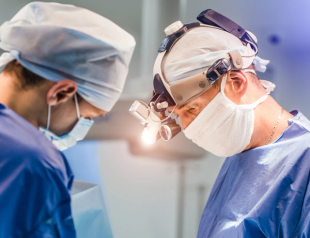
- 3. Incision Planning
Before the surgery begins, the surgeon marks the breasts while the patient is standing or sitting to guide the incision placement and the amount of skin to be removed. The markings help in achieving the desired lift and symmetry during the procedure. The choice of incision technique depends on the degree of breast sagging (ptosis), the size and shape of the breasts, and the amount of excess skin. - 4. Incision Techniques
There are several incision techniques used in a breast lift, and the choice depends on the patient's anatomy and the desired outcome. The three most common incision patterns are:- Crescent Lift: A minor lift involving a small, crescent-shaped incision along the upper half of the areola. This technique is suitable for women with minimal sagging.
- Periareolar or "Donut" Lift: An incision is made around the entire circumference of the areola. This technique is used for women with mild to moderate sagging and involves minimal scarring.
- Vertical or "Lollipop" Lift: An incision is made around the areola and vertically down to the breast crease. This technique is ideal for moderate sagging and provides a more significant lift while still limiting scarring.
- Anchor or "Inverted-T" Lift: This technique involves three incisions: one around the areola, a vertical incision from the bottom of the areola to the breast crease, and a horizontal incision along the breast crease. This method is used for women with significant sagging and excess skin and provides the most dramatic lift and reshaping.
- 5. Reshaping and Lifting the Breast Tissue
After making the incisions, the surgeon lifts and reshapes the underlying breast tissue to improve breast contour and firmness. This involves redistributing the breast tissue to a higher position on the chest wall and removing any excess tissue that contributes to sagging. The skin is also tightened to eliminate any laxity. - 6. Repositioning the Nipple-Areola Complex
The nipple-areola complex is usually repositioned to a more natural, youthful height, providing a balanced appearance on the newly shaped breast mound. If necessary, the areola can also be resized or reshaped to match the new breast proportions. In some cases, the nipple-areola complex may be left attached to its underlying tissues to preserve sensation and blood supply. - 7. Removing Excess Skin and Closing Incisions
Once the breasts have been reshaped and the nipple-areola complex repositioned, the surgeon removes any excess skin to create a tighter and smoother breast appearance. The incisions are then closed with sutures, which may be placed deep within the breast tissue for additional support. The skin incisions are closed with sutures, surgical tape, or skin adhesives to minimise scarring. Surgical drains may be placed temporarily to prevent fluid accumulation, but they are usually removed within a few days post-surgery. - 8. Applying Dressings and Support Garments
After the incisions are closed, the breasts are covered with gauze dressings and surgical tape. The patient is typically fitted with a surgical bra or a compression garment to support the breasts, reduce swelling, and promote proper healing. - 9. Postoperative Care and Recovery
Postoperative care is essential for ensuring proper healing and optimal results. Patients are usually advised to avoid heavy lifting, strenuous activities, and sleeping on their stomachs for several weeks following surgery. Pain, swelling, and bruising are common during the initial recovery period and can be managed with prescribed pain medications. Follow-up consultations are scheduled to monitor the healing process, remove sutures if needed, and address any concerns.
As with any surgery, a breast lift carries potential risks and complications, such as infection, bleeding, scarring, changes in nipple sensation, asymmetry, poor wound healing, and, rarely, complications related to anaesthesia. While these complications are generally rare, it is essential to follow the surgeon's postoperative instructions carefully to minimise these risks.
Overall, a breast lift is considered a safe and effective procedure when performed by a qualified plastic surgeon. It can provide significant improvements in breast shape, position, and overall appearance, helping to restore a youthful and natural contour to the breasts.
Men may choose to have breast reduction surgery, known medically as gynecomastia surgery, to address enlarged or overdeveloped breast tissue, a condition called gynecomastia. This condition can occur at any age, but is often observed during periods of hormonal changes such as puberty or as a result of medication use. It is characterized by excess glandular tissue, fat, or both, leading to the appearance of "male breasts." Gynecomastia may cause psychological issues and pain, swelling, and breast sensitivity.
Male Breast Reduction Procedures: A Step-by-Step Guide
- 1. Preoperative Assessment
The process begins with a thorough preoperative consultation with a board-certified plastic surgeon. During this visit, our surgeon will review the patient’s medical history, conduct a physical examination, and discuss the patient’s goals and expectations for the surgery.
The surgeon may order blood tests, hormone level assessments, or imaging studies (like mammography or ultrasound) to rule out any underlying conditions that could be causing gynecomastia, such as hormonal imbalances, tumors, or certain medications.
Based on the severity of gynecomastia and the patient's body type, our surgeon will discuss the most appropriate surgical techniques and incision patterns. te surgical technique and incision pattern to be used during the procedure. - 2. Preoperative Preparations
The patient will receive instructions on preparing for surgery, including guidelines on medications, smoking cessation, and avoiding certain supplements that can increase bleeding.
Fasting for at least 6-8 hours before surgery is typically required.
Arrangements should be made for transportation and postoperative care, as patients will not be able to drive immediately after the procedure.
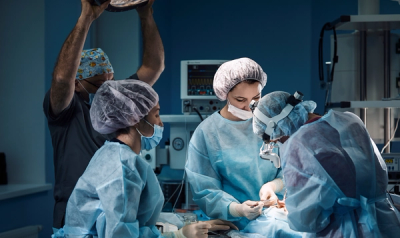

- 3. Anaesthesia
On the day of surgery, the patient is taken to the operating room, and anaesthesia is administered. Gynecomastia surgery is typically performed under general anaesthesia, ensuring the patient is asleep and pain-free throughout the procedure.
In some cases, local anaesthesia with sedation may be used for less extensive procedures, depending on the surgeon's recommendation and the patient's comfort level. - 4. Incision Planning
Before starting the surgery, the surgeon will make precise markings on the chest while the patient is in a standing or upright position. These markings serve as a guide for incision placement, tissue removal, and sculpting during the procedure. - 5. Incision Techniques
The choice of incision technique depends on the type and severity of gynecomastia, whether it involves primarily excess glandular tissue, fat, or a combination of both. The most common surgical techniques include:- Liposuction-Only Technique: This technique is used when gynecomastia is caused mainly by excess fatty tissue with good skin elasticity. A small incision, usually around the edge of the areola or in the armpit, is made, and a thin cannula is inserted to break up and suction out the excess fat. Liposuction alone is minimally invasive and results in minimal scarring.
- Excision Technique: This technique is used when there is significant glandular tissue, excess skin, or when the areola needs to be repositioned or reduced. An incision is typically made around the edge of the areola (periareolar incision) or along the natural crease of the chest. The excess glandular tissue, fat, and sometimes skin are surgically removed.
- Combination of Liposuction and Excision: In many cases, a combination of both liposuction and excision techniques is used to achieve optimal contour and natural results. Liposuction removes excess fat, while excision removes glandular tissue and excess skin.
- 6. Removal of Excess Tissue and Sculpting the Chest
Using the chosen incision technique, the surgeon carefully removes excess fat and glandular tissue. In cases involving the excision technique, the surgeon may also remove a portion of skin and reposition the nipple-areola complex to a more natural position, if necessary.
The surgeon sculpts the chest to achieve a flat, masculine contour that complements the patient's body proportions. The goal is to ensure symmetry and a natural-looking result. - 7. Closing the Incisions
Once the desired contour is achieved, the incisions are closed with sutures. The surgeon may use deep sutures to provide additional support to the newly contoured chest and minimise the risk of complications. Surface sutures, surgical tape, or skin adhesives are used to close the skin.
In some cases, small drainage tubes may be placed to help remove excess fluid or blood that could accumulate in the surgical area. These drains are usually removed within a few days after surgery. - 8. Application of Dressings and Compression Garments
After the incisions are closed, sterile dressings are applied to the surgical site to protect the incisions and reduce the risk of infection.
A compression garment is fitted over the chest area. This garment helps minimise swelling, supports the healing tissues, and helps the chest conform to its new shape. - 9. Postoperative Care and Recovery
After surgery, the patient is monitored in a recovery area until they are awake and stable. They are then discharged with postoperative care instructions. In most cases, gynecomastia surgery is performed on an outpatient basis, allowing the patient to go home the same day.
Pain, swelling, and bruising are common in the first few days following surgery. These symptoms are managed with prescribed pain medications, cold compresses, and proper rest.
Patients are instructed to avoid strenuous activities, heavy lifting, and exercises that could strain the chest muscles for several weeks. Light activities and walking are encouraged to promote circulation and reduce the risk of blood clots.
Follow-up consultations are scheduled to monitor the healing process, and assess for potential complications such as infection, hematoma, or poor wound healing. During these consultations, the surgeon will evaluate the surgical results and ensure the patient is progressing well.
Like any surgical procedure, Gynecomastia surgery carries potential risks and complications, such as infection, bleeding, scarring, changes in nipple sensation, asymmetry, and, rarely, contour irregularities. Most complications are rare and can be minimised by following the surgeon’s postoperative care instructions carefully.
How Will I Know Which Rhinoplasty Procedure Is Right For Me?
Each patient has a unique nasal structure, including differences in bones, cartilage, and skin.
The specific type of Rhinoplasty procedure is determined for each individual patient after a physical examination and consultation with a member of our Rhinoplasty team.
To achieve the desired results, it is crucial that our patient's preferences are closely aligned with our rhinoplasty specialist's recommendations. Effective communication is key to ensuring that our patient's expectations are clearly understood mutually agreed upon.



